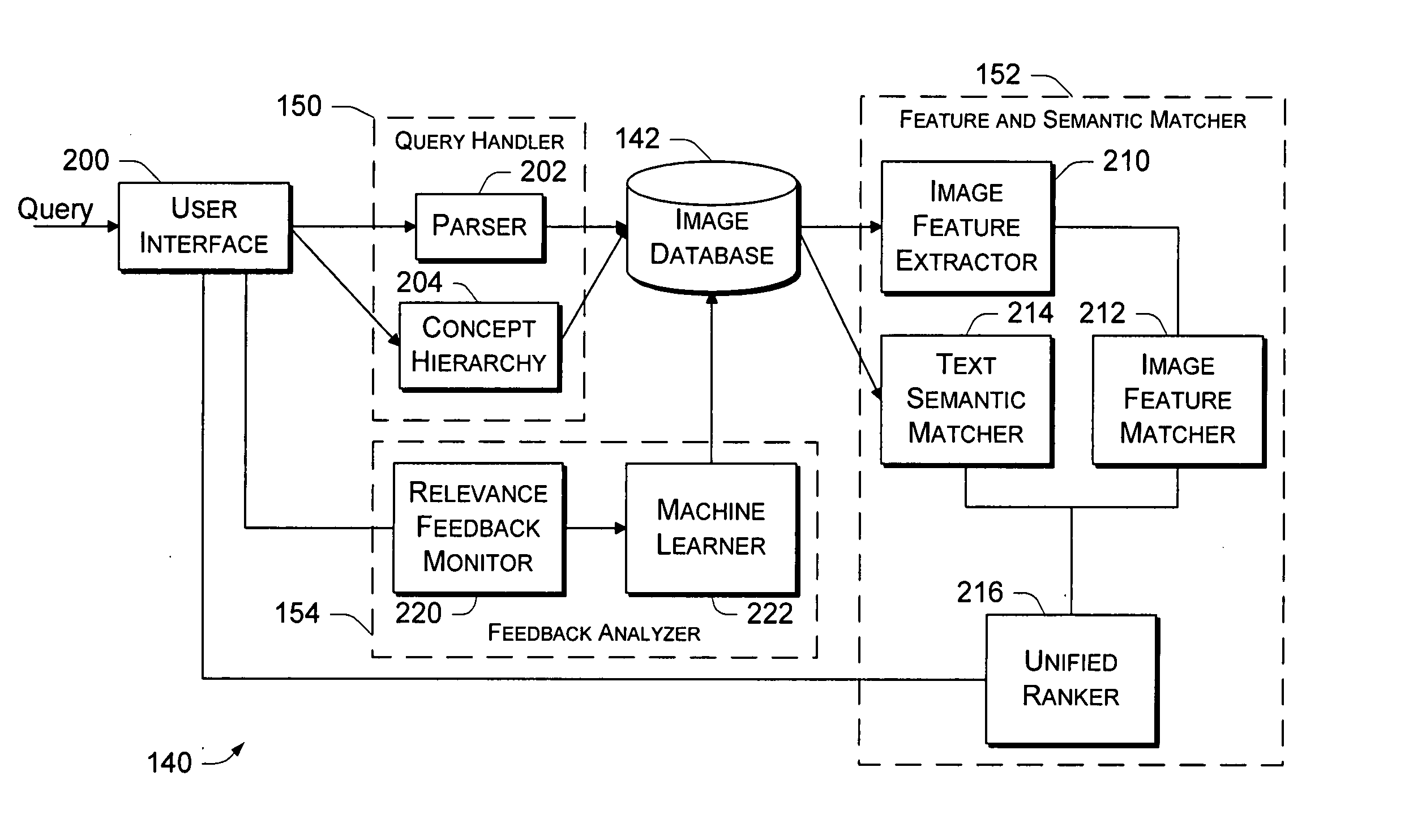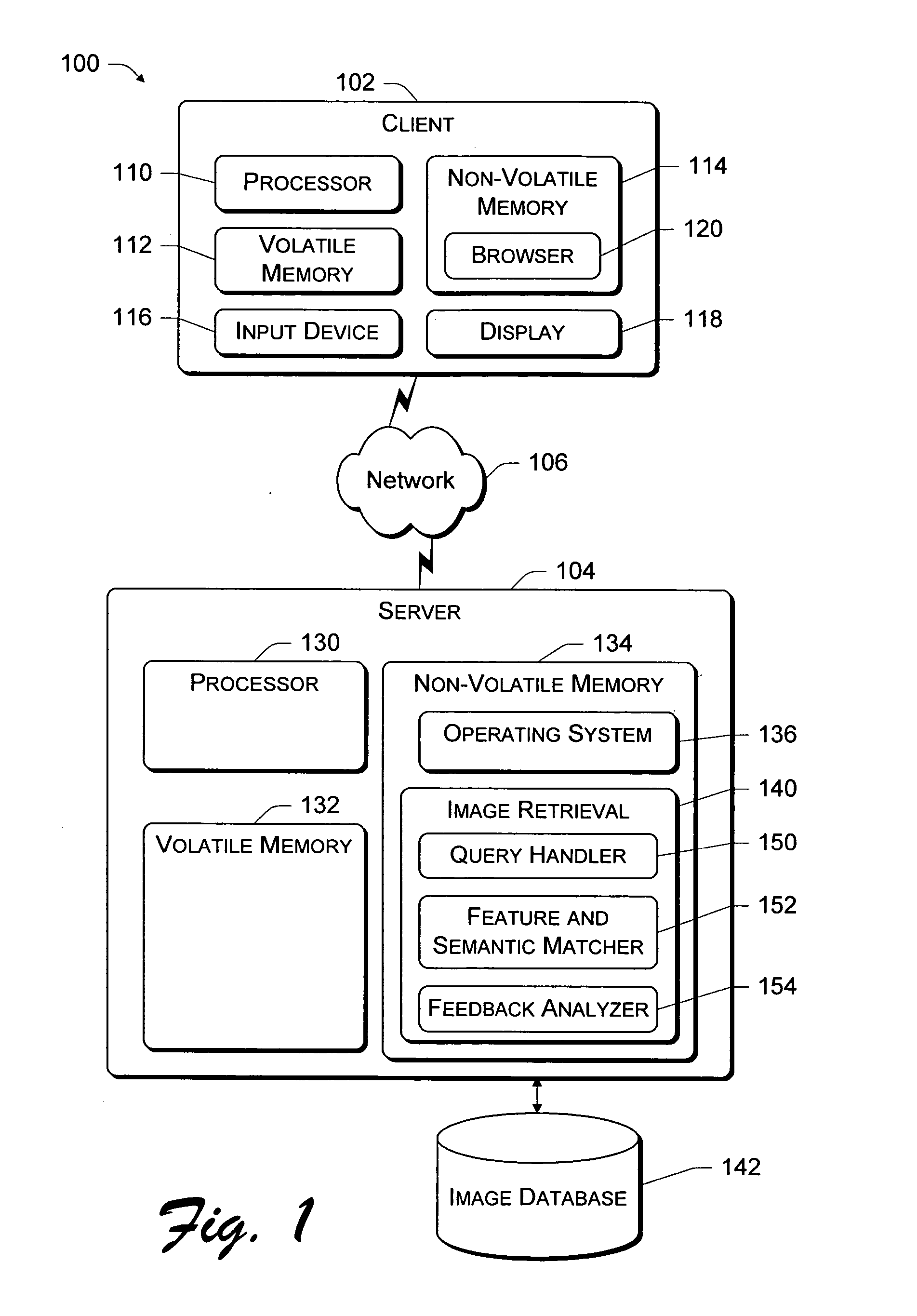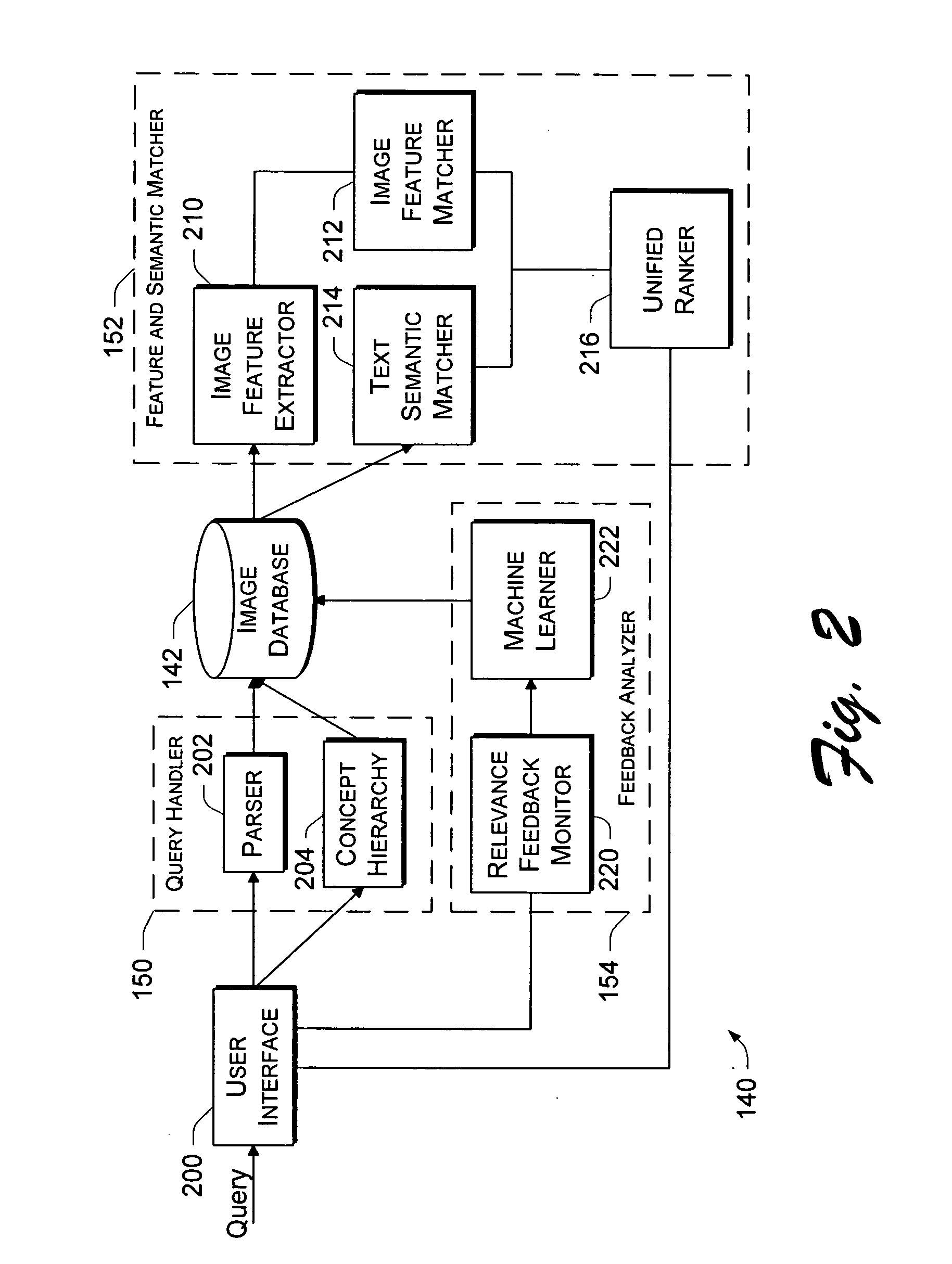Image retrieval systems and methods with semantic and feature based relevance feedback
a semantic and feature-based relevance and image technology, applied in the field of image retrieval systems, can solve the problems of difficult or impossible for a user to precisely describe the inherent complexity of certain images, limited retrieval accuracy, and few databases with annotated images, so as to strengthen associations and strengthen associations
- Summary
- Abstract
- Description
- Claims
- Application Information
AI Technical Summary
Benefits of technology
Problems solved by technology
Method used
Image
Examples
Embodiment Construction
This disclosure describes an image retrieval system that performs both keyword-based and content-based image retrieval. The system seamlessly integrates feature-based relevance feedback and semantic-based relevance feedback. The image retrieval system also supports a semantic network constructed on top of an image database to associate keywords with images and employs machine learning to adapt the semantic network based on user feedback.
The image retrieval architecture is described in the context of an Internet-based system in which a server hosts the image retrieval system and clients submit user queries to the server. However, the architecture may be implemented in other environments. For instance, the image retrieval architecture may be implemented in non-Internet-based client-server systems or on a non-networked computer system.
Exemplary Computing Environment
FIG. 1 shows an exemplary computer network system 100 in which the image retrieval system may be implemented. The ne...
PUM
 Login to View More
Login to View More Abstract
Description
Claims
Application Information
 Login to View More
Login to View More - R&D
- Intellectual Property
- Life Sciences
- Materials
- Tech Scout
- Unparalleled Data Quality
- Higher Quality Content
- 60% Fewer Hallucinations
Browse by: Latest US Patents, China's latest patents, Technical Efficacy Thesaurus, Application Domain, Technology Topic, Popular Technical Reports.
© 2025 PatSnap. All rights reserved.Legal|Privacy policy|Modern Slavery Act Transparency Statement|Sitemap|About US| Contact US: help@patsnap.com



